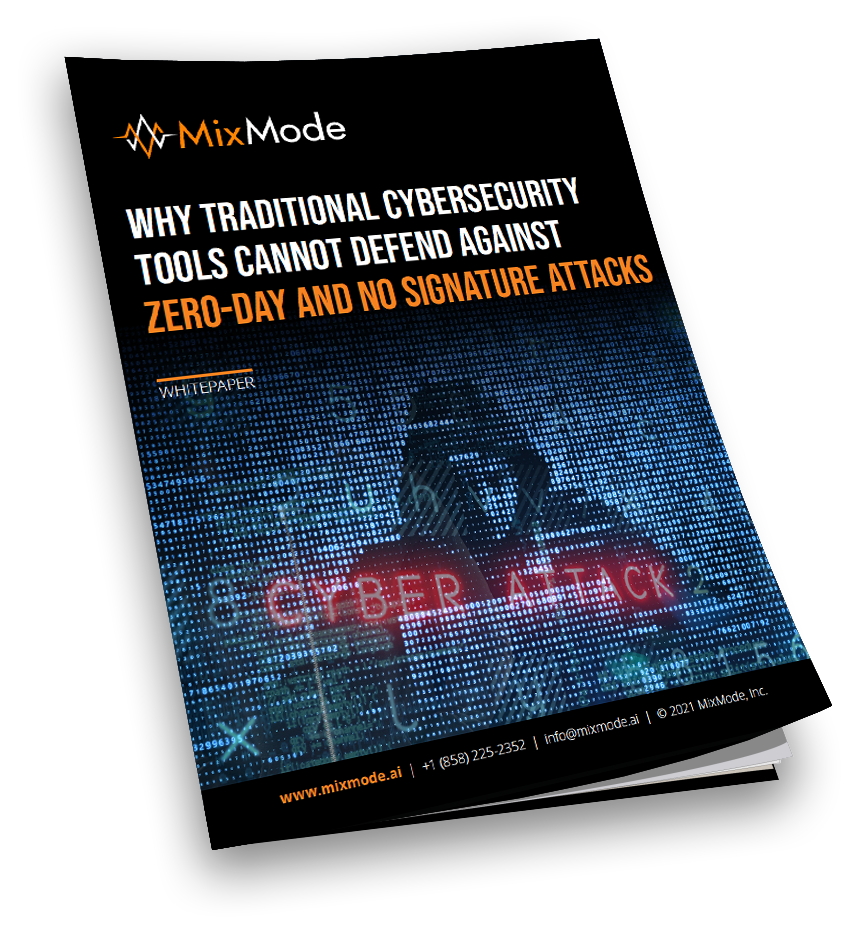In a recent blog post, Sandra Joyce, Vice President of Mandiant Intelligence at Google Cloud, highlights the growing importance of zero-day protection, the increasing use of security devices as attack vectors, and the need for organizations to have a layered approach to security.
“Zero Day Summer”
The blog also introduced the term “Zero-day Summer,” which refers to the period during summertime when cybercriminals take advantage of the vulnerabilities in software, applications, and computer systems that remain undetected and unpatched by security teams.
Zero-day attacks are considered one of the most advanced and dangerous threats organizations face today. These attacks occur when hackers exploit previously unknown vulnerabilities in software, resulting in unauthorized access, data breaches, and other cybersecurity risks.
Traditional threat detection tools are ineffective at detecting zero-day threats due to their reliance on known signatures or patterns of known threats. As a result, security teams struggle to identify and mitigate these types of novel attacks promptly, exposing organizations to significant risks and damages.
Highlights from the blog post include:
- Zero-day protection is critical: Organizations need a zero-day protection strategy to protect themselves from these attacks.
- Security devices are increasingly being used as attack vectors: Security devices, such as firewalls and intrusion detection systems (IDS), are often seen as a barrier to attackers. However, attackers are increasingly finding ways to exploit these devices to access systems. Organizations need to be aware of these threats and take steps to protect their security devices.
- A layered approach to security is essential: No single security measure can protect an organization from all threats. Organizations need to have a layered approach to security that includes a variety of measures, such as firewalls, IDS, intrusion prevention systems (IPS), encryption, and security awareness training.

Bracing for Zero Day Summer – Are Your Defenses Ready?
The warm summer months tend to see a seasonal spike in damaging zero-day exploits against enterprise targets before the disclosure or availability of patches. The root causes for this pattern are still uncertain, but “Zero Day Summer” highlights a critical blind spot in traditional security defenses.
This year has already seen high-impact examples, including:
- CVE-2023-22205: This vulnerability affects the Microsoft Exchange Server product. It allows attackers to execute arbitrary code on vulnerable systems.
- CVE-2023-22122: This vulnerability affects the VMware Workspace ONE Access product. It allows attackers to gain remote access to vulnerable systems.
- CVE-2023-22100: This vulnerability affects the Fortinet FortiGate product. It allows attackers to bypass security controls and gain access to vulnerable systems.
- CVE-2023-22080: This vulnerability affects the Cisco AnyConnect product. It allows attackers to execute arbitrary code on vulnerable systems.
- CVE-2023-22077: This vulnerability affects the Microsoft Windows Print Spooler service. It allows attackers to execute arbitrary code on vulnerable systems.
The risks are elevated in summer, as seen by patterns in recent years:
- 2022: Though just outside summer, there were zero days like Follina, which exploits a Windows vulnerability to install malware, and Log4JShell, exploiting the ubiquitous log4j library.
- Summer 2021: PrintNightmare and other Windows zero-days led to exploitation and ransomware campaigns.
- Summer 2020: A Linux sudo vulnerability and Windows Signing abuse enabled escalated privileges.
- Summer 2019: RDP hijacking vulnerabilities came to light after active exploitation.
Why do these undisclosed, unpatched threats peak in summer? Potential factors include the ticking “sell-by date” of secretly stockpiled exploits, kids off school unleashing malware, or pent-up demand after vendor conferences.
Regardless of the reasons, most organizations remain severely exposed. Legacy defenses rely on inspecting known bad patterns and behaviors. Unidentified zero-days inherently evade these protections.
Updating software also provides no defense against exploits of supply chain dependencies like Log4J.
Zero-day resilience requires dynamically detecting novel attacks as they emerge based on abnormal behaviors and activities.
Traditional Security Tools Are Not Enough
One of the main reasons organizations require more than traditional security tools to detect and mitigate zero-day threats effectively is their reliance on signature-based detection. These tools compare incoming traffic or files against a database of known patterns or signatures of previously identified threats. However, they can bypass these tools undetected since zero-day threats are unknown and have no signature.

Furthermore, traditional security tools are often designed to detect and mitigate known threats based on historical attack patterns. They are not equipped to detect new and evolving attack techniques employed by sophisticated threat actors. Zero-day threats, by their very nature, leverage new and previously unseen attack vectors, making it difficult for traditional security tools to keep up.
To effectively detect and protect against zero-day threats, organizations must implement advanced threat detection solutions beyond signature-based detection. Solutions, like MixMode, use advanced techniques such as generative AI, behavioral analysis, machine learning, and threat intelligence to identify and respond to unknown threats in real time.
Types of Zero-Day Attacks
Zero-day attacks can take various forms and exploit vulnerabilities in systems and applications. Some common zero-day attacks include zero-day exploits, zero-day vulnerabilities, and zero-day malware.
A zero-day exploit refers to an attack where cybercriminals take advantage of a software vulnerability that was previously unknown to the vendor or developer. By leveraging this vulnerability, attackers can gain unauthorized access to systems, execute malicious code, or carry out other malicious activities.
Zero-day vulnerabilities are the undisclosed or unpatched flaws in software, operating systems, or applications that threat actors can exploit. These vulnerabilities are not yet known to the vendor or developer, allowing cybercriminals to exploit them.
Zero-day malware is a type of malicious software that is designed to exploit zero-day vulnerabilities. This malware can be delivered through various means, such as phishing emails, infected websites, or compromised networks, and can infect systems without being detected by traditional security tools.
Malware Attacks
Malware attacks have evolved significantly, becoming more sophisticated and evasive. Cybercriminals constantly develop new tactics to bypass traditional threat detection tools and carry out malicious activities.
Malware attacks can take various forms, including trojans, worms, viruses, and spyware, each with unique characteristics and capabilities. These attacks exploit vulnerabilities in systems and applications, often using social engineering techniques like phishing to trick users into unknowingly downloading or executing the malware.
Cyber attacks utilizing malware have also become more targeted and stealthy. Advanced persistent threats (APTs), for instance, employ advanced evasion tactics to evade detection. APTs are typically carried out by sophisticated threat actors, such as state-sponsored actors, who aim to gain prolonged access to targeted networks for espionage or sabotage.
One type of malware attack that has gained prominence is ransomware, which encrypts the victim’s files and demands a ransom for their release. Ransomware attacks have had severe consequences, causing disruptions in various sectors, including healthcare, finance, and government. Examples include the WannaCry and NotPetya attacks in 2017, which impacted thousands of organizations worldwide.
Exploitation Attacks
Exploitation attacks exploit software, hardware, or human behavior weaknesses to gain unauthorized access, steal data, or cause damage and can have devastating consequences for organizations and individuals.
One common type of exploitation attack is SQL injection. This attack targets web applications that use a database and involves inserting malicious code into SQL statements. By exploiting poorly coded input validation, attackers can manipulate the database and gain unauthorized access or retrieve sensitive information.
Another type of exploitation attack is a buffer overflow. This occurs when a program writes more data to a buffer than it can handle, causing overflow and potentially overwriting adjacent memory. Attackers can exploit this vulnerability to execute arbitrary code and gain control of the affected system.
One significant example is the Equifax data breach in 2017. Hackers exploited a vulnerability in the company’s web application to access the sensitive personal information of approximately 143 million individuals.
Advanced Persistent Threat (APT) Attacks
Advanced Persistent Threats (APT) are highly complex and typically driven by well-funded and skilled threat actors, often state-sponsored or organized crime groups. These attacks aim to infiltrate a target network or system, remain undetected for an extended period, extract valuable data, or establish long-term control.
APTs employ various techniques to evade detection, such as zero-day vulnerabilities, advanced malware, and social engineering tactics like spear-phishing. These attacks are characterized by their persistence, as the threat actors continuously adapt their tactics, techniques, and procedures (TTPs) to stay hidden and achieve their objectives. APT attackers are patient and methodical, conducting extensive reconnaissance and carefully selecting their targets.
The long-term objectives of APT attacks are varied and often align with geopolitical or financial motivations. These objectives could include stealing intellectual property, compromising infrastructure, disrupting critical services, or conducting espionage. Given the potentially severe consequences, organizations must implement comprehensive security measures to defend against APT attacks.

Patching and Updating Systems Regularly
Patching and updating systems regularly is of utmost importance to maintain a strong defense against zero-day threats. These threats exploit vulnerabilities in software and hardware that are unknown to the vendor and for which there may not be any solutions or patches available. Organizations can address these vulnerabilities and prevent potential exploitation by regularly applying updates and patches.
Regular updates and patches help organizations stay ahead of emerging threats and improve their overall cybersecurity posture. As new vulnerabilities are discovered and reported, software and hardware vendors release updates and patches to fix these issues. By promptly applying these updates, organizations can close known security holes and reduce the risk of falling victim to zero-day threats.
In addition to addressing known vulnerabilities, regular updates and patches help organizations mitigate the impact of new threats. Cybercriminals constantly evolve their tactics and techniques, continuously discovering new vulnerabilities. By maintaining up-to-date systems, organizations can proactively protect themselves against emerging threats and maintain a higher level of security.
Patching and updating systems should be fundamental to every organization’s cybersecurity strategy.
How MixMode Defends against Zero Days
The MixMode Platform is a leading threat detection and response solution that effectively defends against zero-day threats by employing a unique blend of advanced AI-based anomaly detection and real-time network traffic monitoring.
The MixMode Platform is the only generative AI cybersecurity solution built on patented technology purpose-built to detect and respond to threats in real-time, at scale. The MixMode Platform autonomously ingests and analyzes data at scale to cut through the noise, surface critical threats, and improve overall defenses against attacks.
MixMode’s AI technology goes beyond traditional threat detection tools, which often fail to detect zero-day threats due to their reliance on known patterns and signatures. Instead, MixMode’s AI analyzes network behavior in real time.
By continuously monitoring network traffic, MixMode’s AI can establish a baseline of normal behavior for an organization’s network. This baseline is constantly updated and refined based on the ever-changing dynamics of the network environment. Any deviation from this baseline is flagged as potential malicious activity, raising immediate alerts for security teams to investigate.
The effectiveness of The MixMode Platform is exemplified in its ability to detect and mitigate zero-day attacks. As zero-day threats exploit unknown vulnerabilities and lack any pre-existing signatures, MixMode’s AI-based threat detection can identify these attacks based on behavioral patterns. This proactive and real-time approach ensures that zero-day threats are identified and thwarted, preventing potential damage or data breaches.
MixMode’s combination of AI-based anomaly detection and real-time network behavior monitoring provides a highly effective defense against zero-day threats. By staying ahead of emerging threats and detecting malicious activity through analyzing network behavior, The MixMode Platform empowers organizations to maintain a strong cybersecurity posture across on-premises, cloud, and hybrid environments in the face of constantly evolving and sophisticated attacks.
The threat landscape is constantly evolving. Organizations must stay up-to-date on the latest threats and vulnerabilities to effectively defend against today’s sophisticated attacks.
Contact us to learn how we can help you enjoy “Zero Day Summer.”
Other MixMode Articles You Might Like
FBI Warns of Adversary Malicious AI Use While Encouraging AI Cyber Adoption
MixMode Highlighted in Gartner® Hype Cycle™ for Security Operations 2023
Combating Alert Fatigue with the MixMode AI Assistant
Securing Your Cloud Environment: Understanding and Addressing the Challenges in Cloud Security
MixMode Invited to Participate on ‘US Blue Team’ in Annual International Cybersecurity Exercise
Firewalls Are Not Enough: Understanding the Fortinet Flaw and How MixMode Enhances Security


